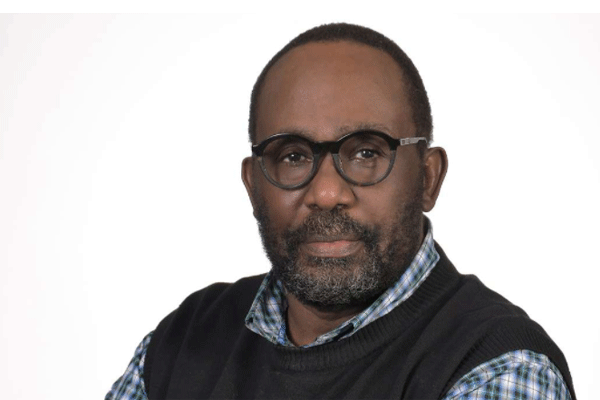Uganda and the history it’s afraid to celebrate

Author: Charles Onyango Obbo. PHOTO/FILE
What you need to know:
If you count from the Buganda crisis of 1966, we are in the 56th year since the Uganda nightmare. From 1971, we are in the 51st
There have been many anniversaries marked in Uganda in recent months, a few loudly, many quietly. And then some, not all. This week marks the 20th anniversary of the signing of the Cessation of Hostilities agreement between Joseph Kony’s Lord’s Resistance Army (LRA) and the Uganda government on August 26, 2006.
The war fizzled out. The LRA, largely confined to South Sudan from then on, continued its rampage there; took it to the eastern Democratic Republic of Congo (DRC); and into the Central African Republic. The Uganda People’s Defence Forces (UPDF) chased them around in military campaigns with the US, the African Union, and on its own until it returned home, exhausted.
While August 2006 was the formal end of the northern war, the tide had turned decisively against the LRA four years earlier, in August 2002, when the bulk of its forces in Uganda fled into South Sudan, leaving small units to stage sporadic attacks.
A consortium of 50 NGOs and aid agencies working in the north estimated in a March 2006 report titled “Counting the Cost: 20 years of war in northern Uganda” that 146 people died each week in the northern region over 20 years of the war, which started with the rebellion by Alice Lakwena’s “Holy Spirit Movement” at the end of 1986. That means 152,278 people died in the conflict. However, that report was considered conservative, and the actual number of people killed was more than 300,000. There is something about conflict in Uganda and the number 300,000 – to which we shall return shortly.
A mind-boggling 2.5 million were displaced by the war. Over 25,000 were abducted by the LRA, and the report above said 41 percent of all deaths in the internally displaced persons (IDP) camps were amongst children under five. It was also estimated then that “The economic cost of the war to Uganda after 20 years is 1.7 billion U.S. dollars.”
The northern war was directly linked to President Yoweri Museveni’s bush war in Luweero against the Uganda People’s Congress government of Milton Obote, UPC, (1981-July 1981), and the short-lived military junta of the Okello generals (July 1981- January 1986). It is estimated that 100,000 to 300,000 (civilians and combatants) died in the Luweero war. There is the 300,000 again. The Luweero bush war fermented the bitter north-south divisions and visceral ancient passions that made the northern war so ferocious.
The Luweero war itself then had a direct line to the fight against military dictator Idi Amin, which ended in his ouster in April 1979. In the horror of Amin’s rule, it is estimated that 300,000 Ugandans perished. The war against Amin was led by the Tanzanian Defence Forces, with a collection of exiled Ugandan groups tagging along. The UPC-wing of the transitional government, the Uganda National Liberation (UNLF), in alliance with Museveni’s Front for National Salvation (FRONASA), eventually locked out the other factions in a May 1980 coup.
They fell out after the UPC stole the December 1980 election, in which the Uganda Patriotic Movement (UPM), with Museveni at its head, came third. Museveni went to the bush in February 1981; the rest is history.
As of August 2006, then, anything between one million and 1.5 million Ugandans had been killed in the preceding 35 years. They would form a country bigger than eight other African nations if they were alive.
And yet, for the tragedy of one to five million deaths, Ugandans aren’t the most murderous of people. Consider, for example, that the Interahamwe and their allies in Rwanda murdered over one million people in the 1994 Genocide against the Tutsi in 100 days – with a population that was only one-third of Uganda’s at the time.
In the DRC, where Uganda has been embroiled for most of the years since 1997, by 2008, the so-labelled Second Congo War (from 1998) was estimated to have caused 5.4 million deaths, mainly through disease and malnutrition, making it the deadliest conflict worldwide since World War II. Those figures, though, were sharply criticised as over the top. Whatever the case, if the relative low slaughter is a result of Ugandan incompetence, then, for once, there is a saving grace to it.
If you count from the Buganda crisis of 1966, we are in the 56th year since the Uganda nightmare. From 1971, we are in the 51st. And if you start from 1986, we are in the 36th year.
A few years back, I was in Maputo, the Mozambique capital. Even within the city, the physical scars of wars gone by were evident. In Uganda, the physical scars disappeared within 30 years. Only the emotional and social ones remain deep inside. Together, they have changed the kind of country this is and could have been. How and why?
-Continues next week.
Mr Onyango-Obbo is a journalist, writer and curator of the “Wall of Great Africans”. Twitter@cobbo3




